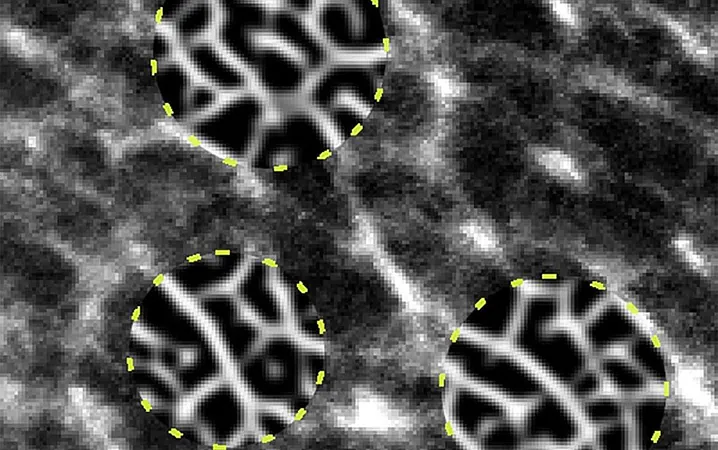
Revolutionary Imaging Technique Unveils Hidden Structures in Rubber Materials!
2024-11-22
Author: Emma
Introduction
In a groundbreaking advancement, researchers at the University of Tsukuba have unveiled a cutting-edge imaging method that dramatically improves the visualization of nanoscale structures in rubber materials.
Significance of the Study
This remarkable study has been published in the highly regarded journal, ACS Applied Nano Materials, and promises to redefine how we understand rubber's intricate makeup.
Challenges in Traditional Imaging
Traditionally, electron microscopy has been plagued by noisy images that obscure the delicate internal architecture of rubber.
This has posed significant challenges in analyzing materials that are critical in industries such as automotive and healthcare.
Rubber's unique properties, including its exceptional softness and stretchability, are vital for applications ranging from high-performance tires to innovative medical products.
However, the complexity of rubber’s molecular network, which directly influences its physical characteristics, has remained difficult to observe in detail.
The Innovative Method
The innovative method developed by the research team specifically addresses these imaging challenges.
By enhancing the visualization of network-like structures where rubber molecules aggregate, the new technique allows for a clearer interpretation of the internal arrangements, even in images that were previously compromised by noise.
Technical Advancements
Combining deep knowledge of rubber materials with advanced mathematical principles, this method automatically calculates network regions that would typically require manual identification.
This not only reduces human error but also allows researchers to simultaneously analyze multiple samples with ease and precision.
Implications and Future Directions
The implications of this discovery are far-reaching.
Industries relying on rubber for performance and safety can now gain insights into material properties that were once hidden in the noise of electron microscopy.
The researchers demonstrated the method's efficacy by measuring the network length of various rubber samples, with results showing a strong correlation to experimental data, establishing its reliability.
Conclusion
As the demand for innovative materials continues to grow, techniques such as this one will play a critical role in advancing material science, potentially leading to new applications and improved products.
This breakthrough could well signify the dawn of a new era in how we visualize and understand materials at the molecular level—paving the way for more sophisticated designs that harness the full potential of rubber and similar compounds.









 Brasil (PT)
Brasil (PT)
 Canada (EN)
Canada (EN)
 Chile (ES)
Chile (ES)
 España (ES)
España (ES)
 France (FR)
France (FR)
 Hong Kong (EN)
Hong Kong (EN)
 Italia (IT)
Italia (IT)
 日本 (JA)
日本 (JA)
 Magyarország (HU)
Magyarország (HU)
 Norge (NO)
Norge (NO)
 Polska (PL)
Polska (PL)
 Schweiz (DE)
Schweiz (DE)
 Singapore (EN)
Singapore (EN)
 Sverige (SV)
Sverige (SV)
 Suomi (FI)
Suomi (FI)
 Türkiye (TR)
Türkiye (TR)